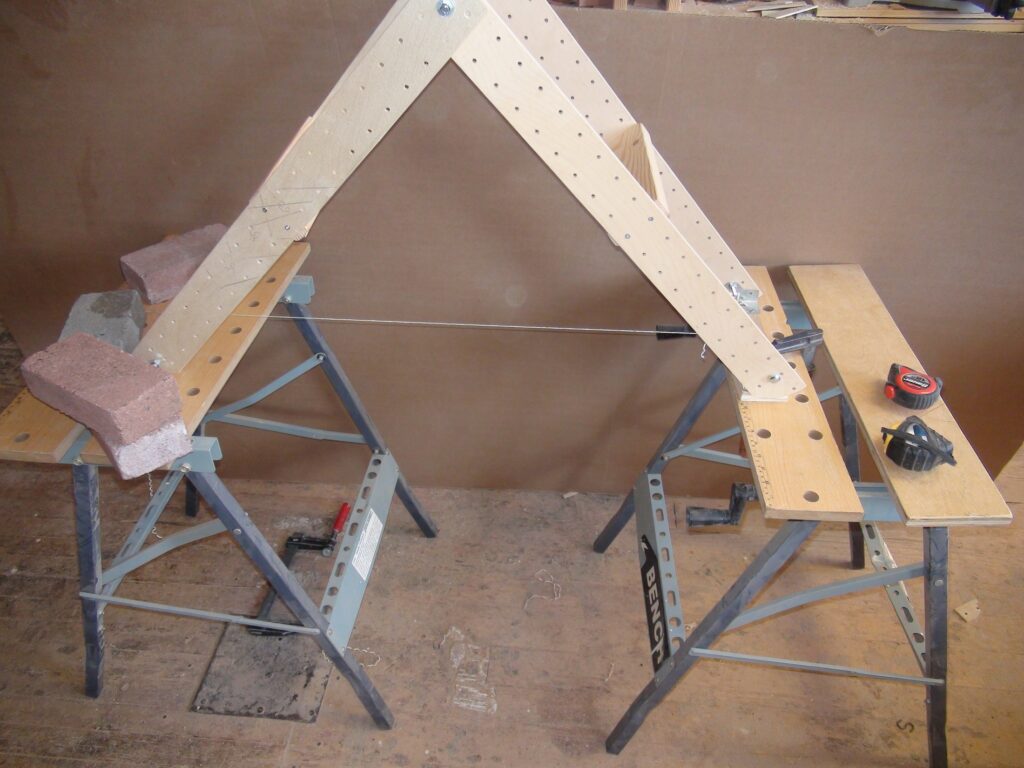BASIC TRUSS–method of joints
This 3 member (piece) truss is made from the 2 angled legs and the connecting member (the thin black thread). It’s part of the 8 truss bridge kit.

First we need to understand the geometry of the truss.
Now to find the External forces acting on the truss.
First the reactions a A and C. We use the sum of the forces in the Y direction and the sum of the moments about point A.
I’ve been told by engineers who know, that when computing the external forces, we DO NOT include the weight of the truss. So instead of 11.9 pounds for the “load” I should have used just the weight of the 2 bricks- 9.4 pounds.
That means that when you Sum the forces in the Y direction- the sum of the 2 reactions is not 11.9 but 9.4 pounds.Next we use the Sum of the moments about point A- and use 9.4 instead of 11.9, and get 4.7 pounds for the reaction @ C and when substituting back into the earlier formula, we get 4.7 for the reaction @A. This makes sense seeing as that the truss is symmetric so there should be 4.7 pounds in the reactions at both A and C.
Now for the Internal forces. We use the Free Body diagram FBD.
By convention, when analyzing the forces using the FBD, we always assume the forces are pulling aweay from the joint- so the arrows point away from joint A
Using the sum of the forces in the X (horizontal) direction, we get an equation with 2 unknowns. The diagonal force AB can be broken down into its vertical and horizontal components.
Now we use the sum of the forces in the Y (vertical ) direction to compute the value of Fab.
But the reaction @A is not 5.95 but 4.7 lbs. so when we substitute 4.7 into the equation for sum of Y forces we get Fab= negative 6.89
Now we have to change Fab from 8.72 to 6.89. When we substitute 6.89 into the formula, we get
Fac (the thread)= 5.02pounds of tension.
This is what the goal was from the beginning.